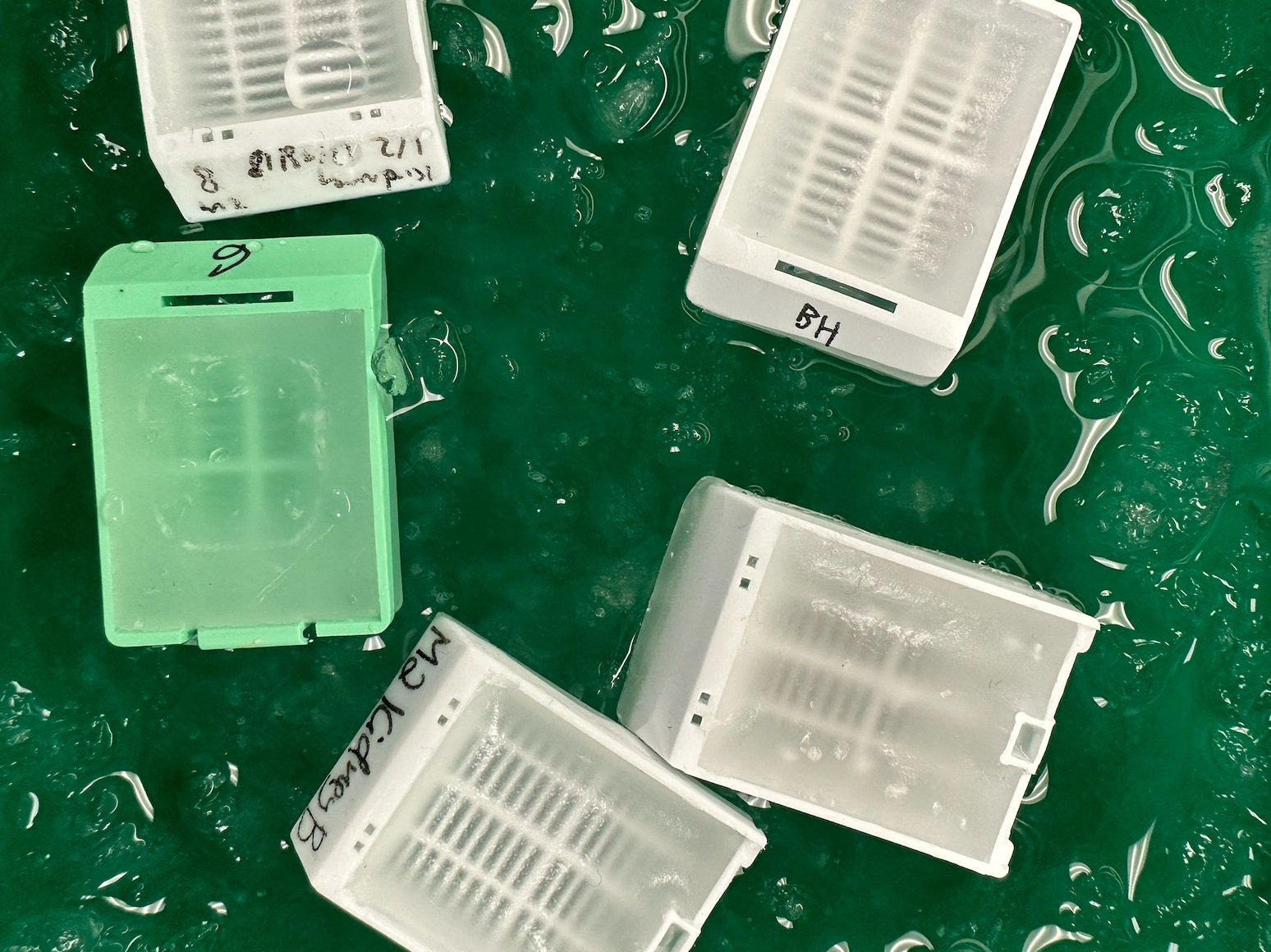
Publications
Publications
-

ImmGenMaps, an open-source cartography of the immune system
ImmGenMaps leverages state-of-the-art spatial transcriptomics to create a comprehensive atlas of immune cells across mouse organs in space.
Combining spatial gene expression profiling with detailed protein marker analysis, ImmGenMaps goes beyond traditional methods, capturing immune cells in their natural tissue context and preserving key spatial information. This approach highlights the diversity and dynamics of immune cell populations and their integration within non-immune cell ensembles that form the sophisticated organ architectures that support life. -

Tissue-resident memory CD8 T cell diversity is spatiotemporally imprinted
Tissue-resident memory CD8 T (TRM) cells provide protection from infection at barrier sites. In the small intestine, TRM cells are found in at least two distinct subpopulations: one with higher expression of effector molecules and another with greater memory potential. However, the origins of this diversity remain unknown. Here we proposed that distinct tissue niches drive the phenotypic heterogeneity of TRM cells. Our study reveals that the regionalized signalling of the intestinal architecture supports two distinct TRM cell states: differentiated TRM cells and progenitor-like TRM cells, located in the upper villus and lower villus, respectively.
-

The XCL1–XCR1 axis supports intestinal tissue residency and antitumor immunity
Tissue-resident memory T cells (TRM) provide frontline protection against pathogens and emerging malignancies. Tumor-infiltrating lymphocytes (TIL) with TRM features are associated with improved clinical outcomes. However, the cellular interactions that program TRM differentiation and function are not well understood. Using murine genetic models and targeted spatial transcriptomics, we found that the CD8+ T cell–derived chemokine XCL1 is critical for TRM formation and conventional DC1 (cDC1) supported the positioning of intestinal CD8+ T cells during acute viral infection. In tumors, enforced Xcl1 expression by antigen-specific CD8+ T cells promoted intratumoral cDC1 accumulation and T cell persistence, leading to improved overall survival. Notably, analysis of human TIL and TRMrevealed conserved expression of XCL1 and XCL2. Thus, we have shown that the XCL1–XCR1 axis plays a non-cell autonomous role in guiding intestinal CD8+ TRM spatial differentiation and tumor control.
-

Increased translation driven by non-canonical EZH2 creates a synthetic vulnerability in enzalutamide-resistant prostate cancer
Overcoming resistance to therapy is a major challenge in castration-resistant prostate cancer (CRPC). Here we show that the protein kinase PKCλ/ι-mediated phosphorylation of enhancer of zeste homolog 2 (EZH2) regulates its proteasomal degradation and maintains EZH2 as part of the canonical polycomb repressive complex (PRC2). Loss of PKCλ/ι promotes a switch during enzalutamide treatment to a non-canonical EZH2 cistrome that triggers the transcriptional activation of the translational machinery to induce a transforming growth factor β (TGFβ) resistance program. The increased reliance on protein synthesis creates a synthetic vulnerability in PKCλ/ι-deficient CRPC.
-

CRISPR screens unveil nutrient-dependent lysosomal and mitochondrial nodes impacting intestinal tissue-resident memory CD8+ T cell formation
How organelle signaling and metabolic adaptation orchestrate tissue-resident CD8+ T (TRM) cell development remains poorly defined. Here, Raynor et al. establish three nutrient-dependent lysosomal signaling nodes as negative regulators of TRM differentiation in the small intestine. These results uncover mechanisms dictating TRM cell quality and quantity for tissue immunity.
-

Metabolic programs of T cell tissue residency empower tumour immunity
Tissue resident memory CD8+ T (TRM) cells enhance reinfection protection and tumor immunity, relying on metabolic adaptations involving coenzyme Q driven by SREBP2. Boosting coenzyme Q synthesis improves mitochondrial function, memory T cell formation, and antitumor immunity, offering potential strategies to enhance immune responses in infections and cancer.
-

CD8+ T cell metabolism in infection and cancer
Recent progress in our understanding of T cell biology highlights the notion that T cell metabolism can no longer be considered an accessory to CD8 T cell functions but a driving force. This review considers old and new research to comprehensively illustrate how the multifaceted aspects of metabolism underly many of the features that distinguish this mighty cell.
-

p62/SQSTM1 by Binding to Vitamin D Receptor Inhibits Hepatic Stellate Cell Activity, Fibrosis, and Liver Cancer
In hepatocellular carcinoma (HCC), p62 is increased in hepatocytes but decreased in hepatic stellate cells (HSCs). Duran et al. show that loss of p62 in HSCs promotes HCC development by reducing the vitamin D receptor (VDR)-RXR interaction, leading to impaired repression of fibrosis and inflammation by VDR.
-

Metabolism shapes the tumor microenvironment
Tumors manipulate the tumor microenvironment (TME) for their benefit through complex metabolic interactions, revealing new therapeutic targets. This review highlights recent findings on the metabolic regulation of tumor cells by the TME, focusing on intratumoral metabolic heterogeneity, the role of cancer-associated fibroblasts (CAFs) in tumor progression, and the influence of tumor-secreted metabolites on tumor immunology.